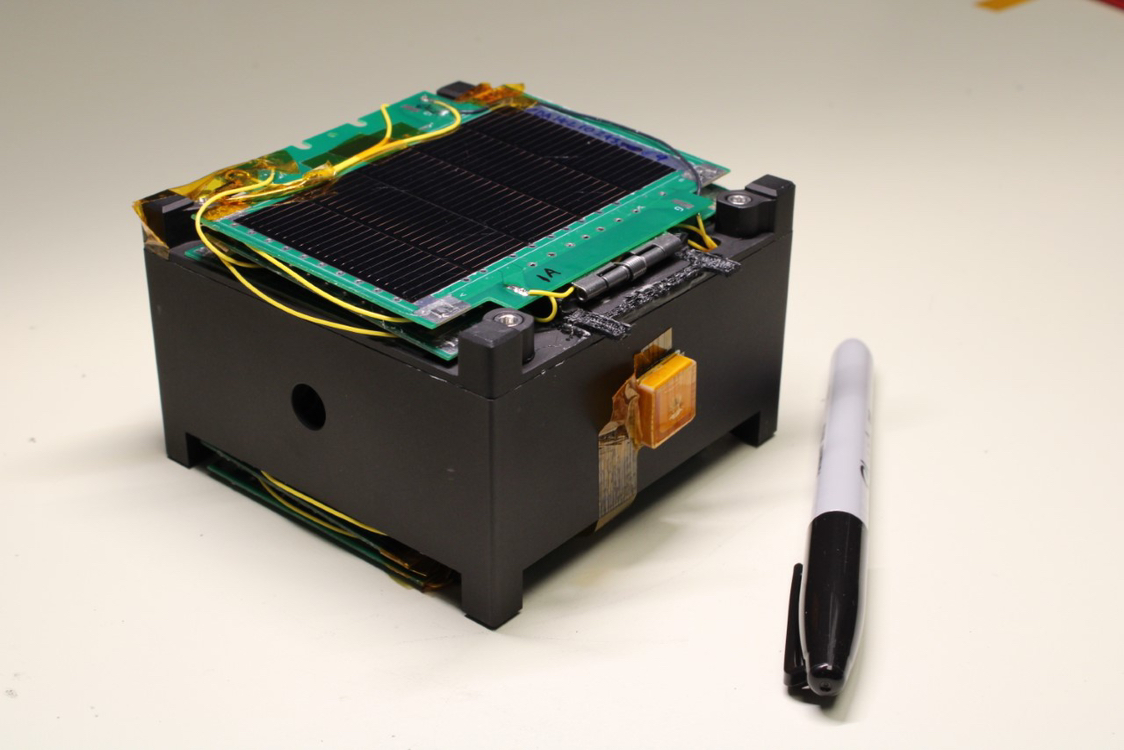USF engineering department launches satellites on SpaceX rocket, plans to continue investing in technologies

Launching three satellites into space was a futuristic feat for USF, but as a component of the launch, the Institute of Applied Engineering (IAE) was able to engage new students and develop connections with other universities that could lead to one giant leap for mankind.
Work at the IAE resulted in three small 2-by-4-inch satellites being launched into space with the SpaceX Falcon 9 rocket Jan. 24 as a part of the Transporter-1 mission. The construction of the satellites has been in the works for three and a half years.
“USF is now a spacefaring university. We are a university with the ability to access space capabilities using our own indigenous space systems,” said Dean of the College of Engineering Robert Bishop during Tuesday’s Board of Trustees meeting.
A team from the IAE, including 23 undergraduate student interns, worked on building the three satellites on site at the IAE facility in the University Mall. The satellites have the ability to communicate with each other while in orbit, and they’re also accessible from the ground so the IAE team can receive data and update the software on the satellite without ever having to retrieve it from space. The multifaceted network of communication within the satellite is representative of two of the IAE’s goals.
“We had two technology development paths. We’re looking at robust and resilient communications around the globe,” said Bishop. “And we’re looking at on orbit system autonomy and network coordination. We really want the satellites in the future to be able to have some autonomy and to be able to coordinate themselves [autonomously].
“Our mission goals are twofold — communicate with each other in low Earth orbit and communicate with the ground station at the IAE headquarters.”
The satellites were created in collaboration with several other organizations that provided additional funding and expertise on aerospace and systems engineering.
One major collaborator was the U.S. Special Operations Command (SOCOM), which provided $85 million in funding for the project including lab workspaces, equipment and other subject matter experts to assist in the satellites’ development. Hillsborough County also assisted the IAE with a $5.2 million grant to get the satellite project off the ground.
“So [Hillsborough County] helped us with the build out of headquarters, lab space and more. Most importantly, a lot of the lab equipment like the vibration test controller, the thermal vacuum chamber which we bought isn’t here yet, but it’s on the way, [radio frequency] test equipment, various computers and software and so forth,” said Bishop.
The College of Engineering has several “visions for the future” as it moves forward after the space launch, specifically as it relates to satellites. One part of this is making them “radically affordable.”
“So these are small satellites with tailorable and appropriately sized subsystems, massive use of commercial technology, and what we’re ultimately aiming for is tactically controlled energetic satellites swarming around the earth in low Earth orbit,” said Bishop.
He also said people don’t need to worry about a satellite falling from space and hitting them on the head, because the satellites are “as small as a sandwich,” and will effectively burn up on reentry into the atmosphere.
While the two main goals of the project were completed with the launch of the satellite, other aims the department has as it moves forward are in aerospace research development projects like the Transporter-1 mission making larger use of commercial technology, and having a “high-risk tolerance while minimizing failures.”
“So we’ve got to fail early and fail often, and these are notions that are not common in space exploration,” said Bishop.
Aside from successfully completing the satellites, the project yielded other achievements as well. The program hired a total of 23 interns at separate times, and six of those undergraduates became master’s students in order to continue working with the satellites. Peter Jorgensen, a senior research engineer at IAE and leader of the satellite development, said the education component was one of the most important parts of the project.
“The student engagement process was one of the most rewarding aspects for myself,” said Jorgensen. “I’m very passionate about space exploration and I think it’s one of the easiest avenues to engage other students and other people in science and technology-focused learning.”
Looking ahead, the IAE is going to expand its skill sets by joining 11 other universities across the country to foster collaboration and connect research opportunities, according to Jorgensen.
“USF is at the center of this academic consortium and we’re bringing in other universities as part of the consortium, when they have skills or when [SOCOM] wants to have some interactions with them,” he said.
“This consortium just started in October 2020, but topics covered include analysis in artificial intelligence, quantum technology, cybersecurity, neural interfaces, battery chemistry and the internet.”
Whether the IAE is sending satellites into orbit or working with other universities to further pioneering research, Bishop said the ability to try new things without fear of failure is what will propel the department’s future scientific achievements forward.
“I think we need to have an entrepreneurial spirit, driving the [small satellite] community,” he said. “We have to get back to experimenting relentlessly and boldly.”






